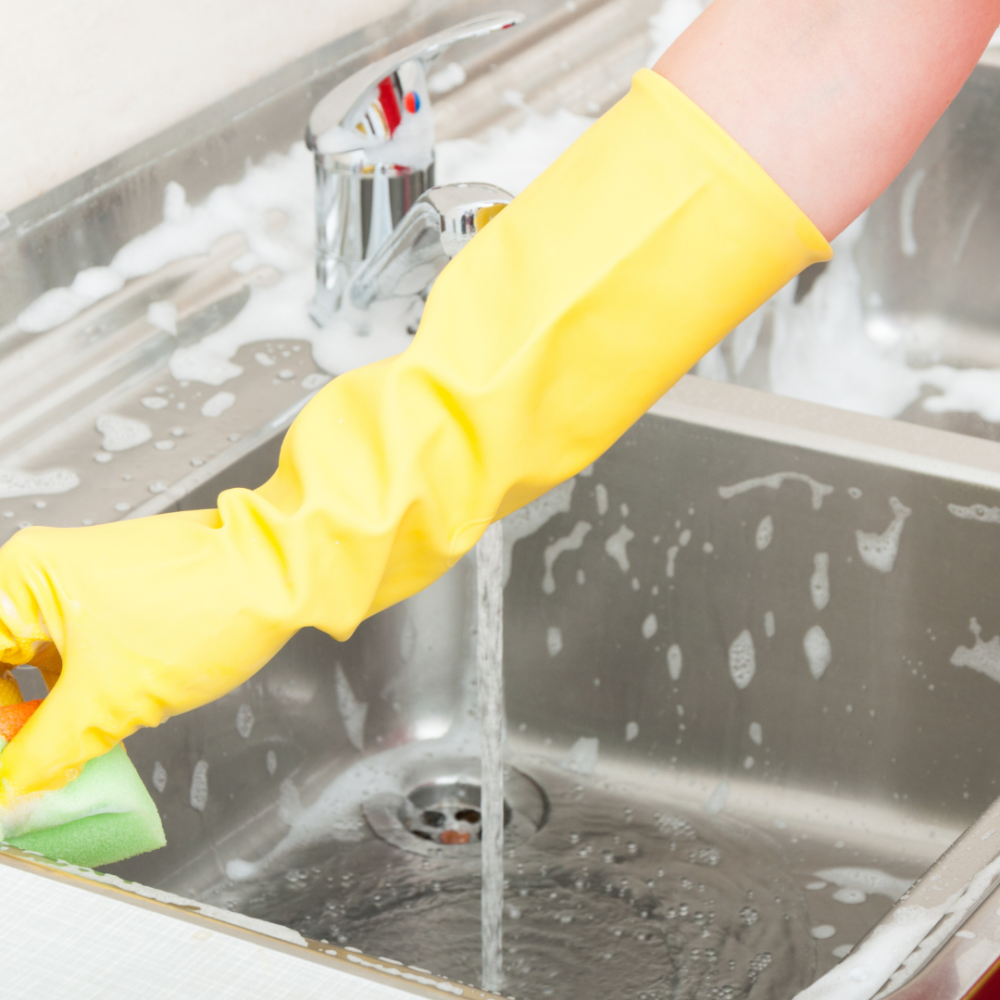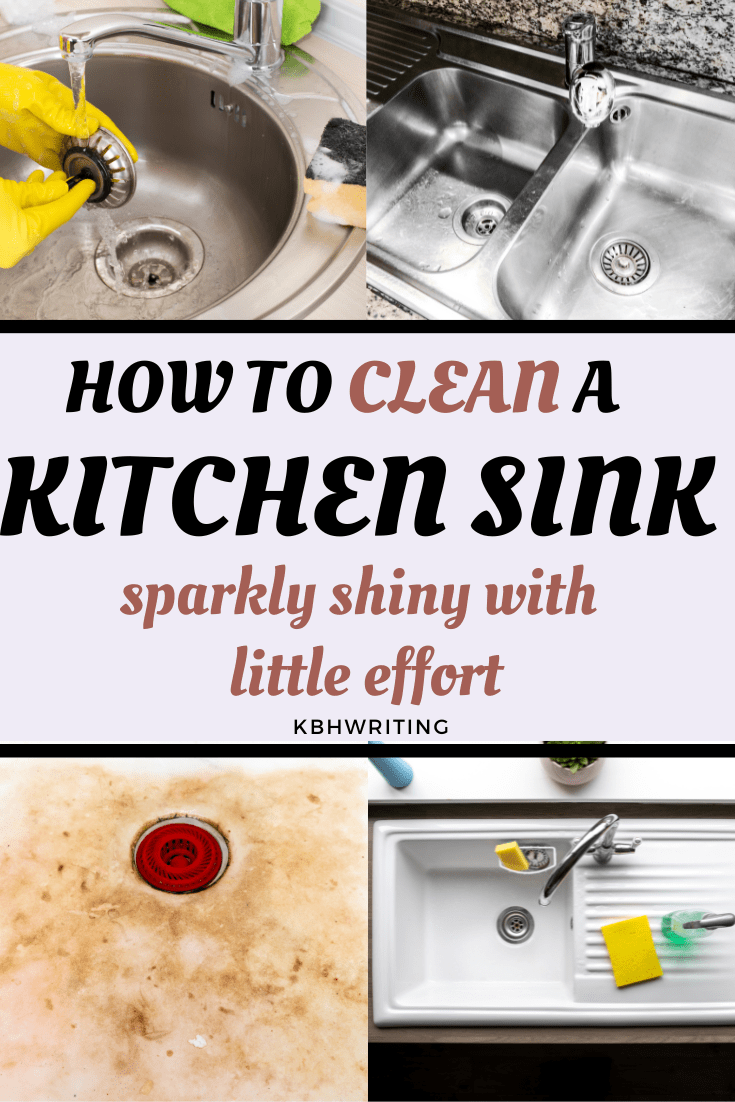Aside from the bathroom, your kitchen sink is probably one of the germiest places in your house due to food particles, stagnant water, and whatever germs wash in from your hands! The question is, How to Clean Kitchen Sink Faster?
Take a look at these cleaning suggestions for your kitchen sink faster!
However, your kitchen sink gets a lot of use in a week, from filthy pots and pans to the dirt from your recently watered houseplant leftover. Dishwashers don’t always smell like a bouquet of flowers, no matter how hard we try.
Old food and filth naturally accumulate in your kitchen drain and can spread throughout your house if not cleaned correctly or frequently enough. Use these how-to instructions to clean your kitchen sink and drain on a regular basis. Clean your kitchen drain and sink on a weekly basis so it becomes second nature.
How to Clean Kitchen Sink Faster
Materials for Cleaning the Dishwasher
- Rubber gloves will come in handy.
- Scrubber without abrasion
- Dawn dish wash liquid
- a solution made from baking soda
- Vinegar that is clear in color
- Peroxide of hydrogen
- Lemon
- Salt

How to Clean Kitchen Sink Faster
1. Clear your sink
Complete any dishes before cleaning the kitchen sink, and then give it a good rinse. Before beginning to clean your kitchen sink, be sure to rinse out all of the remaining food, liquids, and debris. Clear the drains after rinsing.
There is no substitute for rinsing your sink every day to keep it free of food and debris. Food acids and salts can damage the finish of stainless steel sinks.
Stains are more difficult to remove from other types of sinks as a result of this. When you’re done with your dishes for the night, make sure to thoroughly rinse the sink.
2. Disperse Baking Soda & White Vinegar in the Sink
Having cleaned your sink of all visible food and debris, add baking soda to the sink to neutralize any odors. Don’t be afraid to go all the way to the sink and cover it completely.

Alternatively, you can make use of a mason jar by drilling a few holes in the rim. In the event that you decide to use baking soda in a mason jar, consider mixing in a few drops of your favorite essential oils before using. As a bonus, it’ll make your entire kitchen smell fantastic. Lemon is one of our favorite flavors.
It’s simple to learn how to clean a kitchen sink drain with baking soda and vinegar. Plus, the duo does more than just get rid of odors—it’s a tried-and-true way to unblock drains. Remember the 1:2 ratio of baking soda to white vinegar: one part baking soda to two parts white vinegar.
Pour the baking soda down the drain first, then the white vinegar slowly. Allow 15 minutes for the bubbling duo to work their magic, then flush the drain with boiling hot water to remove any lingering residue.
3. Use a clean sponge or cloth after squirting dish soap.
You’re ready to start scrubbing once you’ve covered your sink with baking soda. To make cleaning easier, apply a small amount of dawn dish soap to your sponge or towel.

4. Begin to Scrub!
Baking soda is abrasive, but not to the point of scratching stainless steel or other sinks. Scrub your sink starting at the top and working your way down to the drain. The easiest technique to clean your kitchen sink is to scrub it thoroughly in a circular motion.
5. Cleanse
You’ll want to sanitize your kitchen sink after you’ve finished scrubbing it clean. Rinse out your freshly scrubbed sink to ensure that everything you’ve cleaned is rinsed away and down the drain.
After that, soak some paper towels in white vinegar and line your sink with them. Allow the towels and vinegar to sit for about 20 minutes after covering the entire sink. Vinegar acts as a natural disinfectant. Also, it can aid in the removal of hard water stains.
6. Clean your faucet and handle
Don’t forget to clean your faucet and handle now that your sink basin is clean and sterilized. A mild soapy solution can be used to clean faucets and sink handles. A sponge and dish soap or a surface cleanser should suffice.
After cleaning your faucets, wipe them down with a vinegar-soaked towel to sterilize these often-touched surfaces.
How to Clean Stainless-Steel Kitchen fast
Stainless steel is a more durable material than most other sink materials. The smooth material, unlike white kitchen sinks, resists stains and is significantly less likely to rust. Acidic meals, bleach, and abrasive scrubbers, on the other hand, can damage the finish of a stainless-steel sink. As a result, don’t leave acidic cleaners in the sink for lengthy periods of time, and clean with baking soda rather than bleach-based sprays.
Begin by coating the wet sink in baking soda and dampening your sponge with a little dish soap and hot water. Always start scrubbing at the sides of the sink and work your way down, pushing any grime right into the drain. As needed, use more soap and water until the surface is scum-free. After that, rinse with fresh water. Because stainless steel is prone to watermarks, make sure to dry and off your clean sink with a soft microfiber cloth.
How to Clean a White Kitchen Sink

Rust and food splatters, as well as coffee and wine stains, are the most likely to appear on a white kitchen sink. To assist lift stains and return them to their former state, use hydrogen peroxide and baking soda.
First, lightly dampen the sink with a moist cloth, then sprinkle baking soda over the basin until it is completely covered. Scrub using a sponge or brush after sprinkling a few small drops of hydrogen peroxide over the baking soda. Wash the mixture down the drain once it has been thoroughly cleaned.
Alternative Way to Clean Rust From a Porcelain Sink

Rust and stains are no strangers to glossy porcelain sinks. While you may clean a porcelain sink using the same way as white sinks, you’ll want to use a different procedure to remove rust to protect the pearly surface. Sprinkle salt over half of a lemon and apply it immediately on the rust until the elements have done their thing. Then wash it in warm, soapy water and dry it with a microfiber towel.
Take a step back and appreciate your spotless sink now that you’re done.